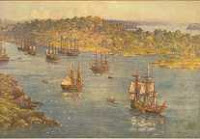 By Karen Mercury
By Karen MercurySir Richard Burton (born 1821) was a man a hundred years ahead of his time. A megalomaniac, brilliant, and brutal, he is mostly known for having the nerve to bring the Kama Sutra and the 1001 Nights to the civilized world. Even as a youth he was fearless and reckless. He once broke his trumpet over the head of his instructor because he wanted to play piano instead. He joined the army in India, where he became known for dressing in Arab garb and going into backwoods districts where no one else would dare tread.
 He read prolifically, became an expert in all things Oriental, and by the end of his life spoke at least 20 languages fluently. He traveled to the Holy City of Mecca and was the first white man to write about it, being able to pass for Arab. He was nearly caught, certain death for a white man, when he lifted his robe to pee instead of squatting like an Arab. During some of his many leaves from the Army, he learned falconry and wrote The Book of the Sword, so detailed it is still used by fencers today.
He read prolifically, became an expert in all things Oriental, and by the end of his life spoke at least 20 languages fluently. He traveled to the Holy City of Mecca and was the first white man to write about it, being able to pass for Arab. He was nearly caught, certain death for a white man, when he lifted his robe to pee instead of squatting like an Arab. During some of his many leaves from the Army, he learned falconry and wrote The Book of the Sword, so detailed it is still used by fencers today.But oddly enough he chose to marry an extremely prudish and upright woman, Isabel Arundel. His translation of the Arabian Nights took him years, and Isabel was extremely mortified about "those activities" of his, his interest in the Kama Sutra. Being a widely traveled ethnologist, most biographers posit that he tried all the techniques he wrote about, and with all of the tribes he visited.
Burton defended himself vociferously. "To those critics who complain of my raw vulgarisms and puerile indecencies, I can reply by quoting what Dr Johnson said to the lady who complained of naughty words in his dictionary: 'You must have been looking for them, Madam!'"
 In India, he went undercover for General Napier to a brothel where English soldiers "frequented" young boys. His resulting incredibly detailed report caused a scandal and it was quickly buried--like so much of his "deviant" writing would later be buried by his prudish wife. Naturally everyone assumed Burton participated in the activities to obtain such details, but I guess we'll never know.
In India, he went undercover for General Napier to a brothel where English soldiers "frequented" young boys. His resulting incredibly detailed report caused a scandal and it was quickly buried--like so much of his "deviant" writing would later be buried by his prudish wife. Naturally everyone assumed Burton participated in the activities to obtain such details, but I guess we'll never know.In 1854 he joined up with John Hanning Speke to travel to Somalia, backed by the Royal Geographical Society. Burton proposed to discover a large interior lake he'd heard about. Burton accomplished the first leg alone, and would set out on the second leg with Speke and two other lieutenants. Before they could leave they were attacked by Somali warriors. Speke was wounded in eleven spots by spears, one lieutenant was killed, and Burton had a javelin thrust through his jaw. Although Burton was cleared of culpability, it was another black mark on his army record. Soon after in the Crimea, his unit mutinied, another black mark that led to a lifelong frustration with being unable to advance in the army.
His most famous trip left out of Zanzibar to "discover" the source of the Nile. Speke amazingly agreed to accompany him--the two were like oil and water, but worked well together on expeditions. They set out in 1857 and suffered various travails--Speke was blind for several weeks and partially deaf due to an infection, and Burton was unable to walk and had to be carried on a litter which ruined his enormous pride. It was actually Speke alone who found Lake Victoria, and Burton refused to believe it was the source of the Nile, since he had been unable to see it himself.
 Speke returned home before Burton and published his own account first, which led to one of the great debates of all time. Speke didn't know any African languages and didn't keep nearly as detailed notes as Burton. Speke had an Imperialist attitude toward Africans and Burton was appalled at the way he randomly killed animals and left the meat sitting there. All of this led to a great rift, and when Speke gave his lecture first at the Royal Geographical Society, breaking their promise to present their findings together, Burton challenged him to a debate. It was all-out war by then, with Burton being the most suspicious character due to his "going native." In 1864 they had a date to debate in front of a society, but the day before, Speke was found dead in a bizarre hunting accident. Many people believe he couldn't handle the stress of going up against Burton who was a superior public speaker.
Speke returned home before Burton and published his own account first, which led to one of the great debates of all time. Speke didn't know any African languages and didn't keep nearly as detailed notes as Burton. Speke had an Imperialist attitude toward Africans and Burton was appalled at the way he randomly killed animals and left the meat sitting there. All of this led to a great rift, and when Speke gave his lecture first at the Royal Geographical Society, breaking their promise to present their findings together, Burton challenged him to a debate. It was all-out war by then, with Burton being the most suspicious character due to his "going native." In 1864 they had a date to debate in front of a society, but the day before, Speke was found dead in a bizarre hunting accident. Many people believe he couldn't handle the stress of going up against Burton who was a superior public speaker.Burton managed to obtain consul positions at Fernando Po and Brazil, bringing Isabel with him and spending much time traveling. He was sent to Damascus where once again he made many enemies, continuing to translate and write many more books. He died in Trieste in 1890--the cloud of another controversy surrounding him when his friends believed Isabel forced him to convert to Catholicism on his deathbed. She had always tried to protect his image, and one of the first things she did upon his death was burn many of his "pornographic" writings, including a final chapter of The Perfumed Garden on pederasty, leading many to term her "the most hated woman in literature."
 Karen Mercury's first three historicals, including STRANGELY WONDERFUL were set in precolonial Africa. Her latest, WORKING THE LODE, due out in January 2011, is an erotic romance set during the California gold rush.
Karen Mercury's first three historicals, including STRANGELY WONDERFUL were set in precolonial Africa. Her latest, WORKING THE LODE, due out in January 2011, is an erotic romance set during the California gold rush.



































